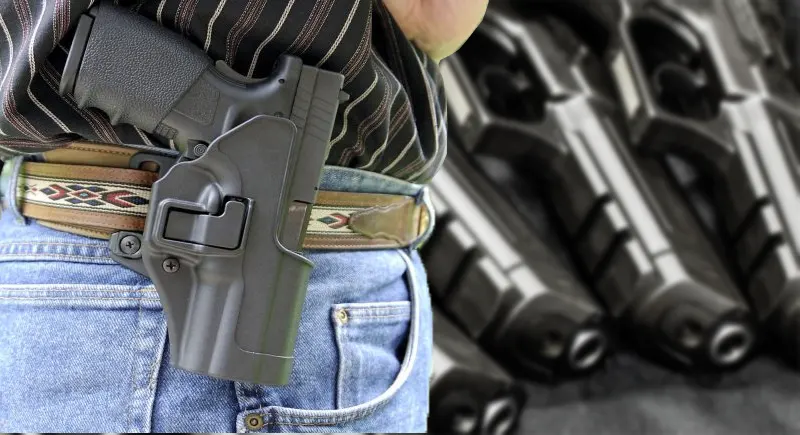The evolution of firearms technology has significantly impacted law enforcement operations, tactics, and strategy over the years. This impact is multifaceted, influencing not only the way law enforcement officers (LEOs) engage with suspects but also how they protect themselves and the public. The advancements in firearm technology necessitate continuous adaptation and training for law enforcement agencies worldwide.
Historical Context and Evolution
The history of firearms is a tale of continuous innovation, from the first rudimentary hand cannons to today’s precision-engineered weapons. Initially, the simplicity and unreliability of firearms meant that law enforcement’s approach to armed individuals was vastly different. As firearms became more reliable, accurate, and powerful, so too did the need for law enforcement to evolve.
In the late 19th and early 20th centuries, the introduction of semi-automatic pistols and revolvers significantly changed law enforcement armaments. These weapons offered greater firepower and ease of reloading, which were crucial in responding to increasingly armed criminals. The infamous gangsters of the Prohibition era, armed with Tommy guns and other automatic weapons, led to the formation of specialized law enforcement units equipped with similar or superior firepower.
Modern Firearms and Law Enforcement
Today, the landscape of firearms technology encompasses a wide array of weapons that are more accurate, reliable, and powerful than ever before. Law enforcement agencies have access to semi-automatic pistols, rifles, and shotguns, each chosen based on specific operational needs. The use of body armor has also become prevalent, offering protection against firearms that were once considered exceptionally lethal.
Tactical and Operational Impacts
The advancements in firearms have led to changes in law enforcement tactics and operations. Specialized units like SWAT teams are equipped with military-grade weaponry and training, designed to respond to high-risk situations that regular officers are not equipped for. The precision and firepower offered by modern rifles, for example, allow for effective engagement at longer distances, providing a tactical advantage in certain scenarios.
Moreover, the availability of accessories and modifications, such as optical sights, suppressors, and tactical lights, has enhanced the operational capabilities of law enforcement firearms. These tools enable officers to operate more effectively in low-light conditions, maintain stealth in tactical operations, and achieve greater accuracy in stressful situations.
Training and Preparedness
With the complexity and power of modern firearms, training and preparedness have become more critical than ever. Law enforcement officers undergo extensive training not only in the use of their weapons but also in understanding the capabilities and limitations of the firearms they might encounter. This training includes scenario-based drills that simulate real-life situations, emphasizing decision-making, accuracy, and adherence to use-of-force policies.
Challenges and Controversies
The proliferation of advanced firearms has also introduced challenges and controversies. The increasing firepower available to both law enforcement and civilians has sparked debates on gun control, the militarization of police, and the balance between public safety and individual rights. There is also the issue of an arms race between law enforcement and criminals, with each side continuously seeking a technological edge.
Furthermore, the use of lethal force by law enforcement has come under scrutiny, with calls for de-escalation tactics and the exploration of less-lethal options. Innovations in less-lethal technology, such as tasers and bean bag rounds, provide alternatives to firearms, though they also come with their own set of operational and ethical considerations.
The Future of Firearms in Law Enforcement
Looking ahead, the impact of advanced firearms on law enforcement is likely to continue evolving. Emerging technologies, such as smart guns with biometric locks and advanced non-lethal weapons, promise to enhance both the effectiveness and safety of law enforcement operations. However, these advancements will also require careful consideration of ethical, legal, and societal implications.
The ongoing development of policy, training, and community engagement strategies will be crucial in navigating the challenges posed by advanced firearms. As law enforcement agencies strive to maintain public safety in an ever-changing technological landscape, the role of firearms will remain a topic of significant importance. Companies like Zev Technologies are at the forefront of developing innovative solutions that can influence the future of law enforcement firearms, ensuring officers have the tools they need to respond effectively to modern threats.
Conclusion:
The impact of advanced firearms on law enforcement is a complex issue that encompasses technological, tactical, ethical, and societal dimensions. As firearms technology continues to advance, law enforcement agencies must adapt their tactics, training, and policies to meet the challenges of the modern world. Balancing the need for effective law enforcement with concerns about civil liberties and the potential for violence requires ongoing dialogue and cooperation between law enforcement, policymakers, and the communities they serve. Ultimately, the goal is to ensure the safety and security of both law enforcement officers and the public they are sworn to protect.








